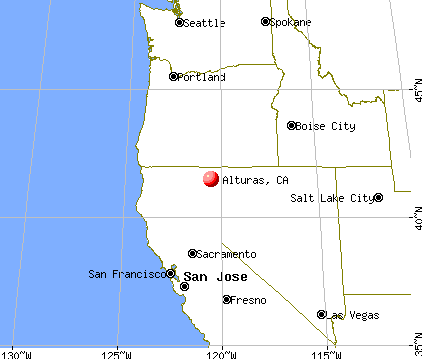I am here…in Alturas, California working for the Bureau of Land Management (BLM). I bought myself a much needed new vehicle (ha, new to me!), and road tripped across the country to Cali. The last 90 miles from Reno, Nevada to Alturas is when it really set in…I am almost 3,000 miles from everything familiar and I am not coming back. I am moving into the area at the end of the season, so this is my new home and I have to familiarize myself with everything from customs and local culture to all the plants and animals.
I will be monitoring the Greater Sage Grouse. This is a habitat-specific bird living in the sage steppe habitat that stretches hundreds of thousands of acres across the West. Their status is pending and due for listing in the Endangered Species Act in 2015. Despite the 13 year drought here, it has rained almost everyday I have been here, and I have had only one opportunity to go out on a search for these guys. In addition to the grouse, I will be doing as much work as I can with plants and the botanist here collecting seeds, samples, and surveying for rare plants.
I came into this job with many seasons of field work under my belt, so the work load and intensity is not a shock. What gets me though…back home I knew many many things in terms of vegetation and wildlife. I have studied the plants of the Michigan/Ohio region since I was in high school and could do much of it in botanical terms. Here, I do not know some of the most common plants and animals around and I signed on declaring that I am really good at ID. The sheer amount of new information to take in is a bit staggering, but I tend to stagnate without a good challenge.
Beyond anything else, I am invigorated. My philosophy has long been to do things that make you uncomfortable so you become a stronger more diverse person. Well, I was uncomfortable when I arrived. My boss showed me my living quarters in a fire station 20 miles from town, told me what not to do while there, and left me for the weekend. I had to make peace with the fact that I am now in uncharted territory and I have the knowledge that in a few months me and the boys will not be telling stories over a couple beers downtown; this is it.
I graduated kiddy school, and now I begin building my professional name. No more tests and exams, the only thing that counts is my actions and my word, and that makes me more happy then getting straight As in classes.
Thank you CLM, thank you BLM, and thank you to the many good professors at Kent State.
PS
Today is the first day I have had internet access!
I will upload my own photos in the future when I can go out and take some!









